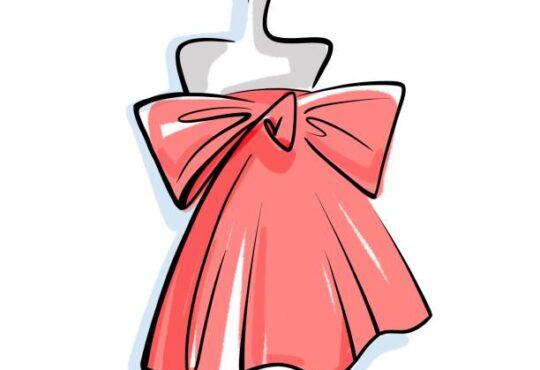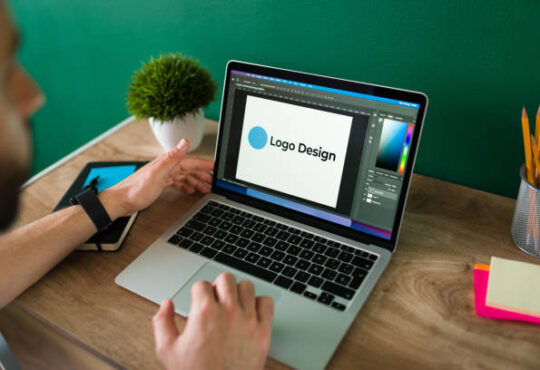
What happens if I copy a logo, design or anything of a brand?
Have you ever seen a design or logo you liked online and thought about using it for your business or social media without really thinking through the legal implications? You’re not alone – it’s such a tempting idea. After all, with just a few edits or tweaks in Photoshop or Canva, you could easily make that logo or design your own, right? Well, not so fast. As much as we may want to shortcut the design process and copy something we admire, copyright and trademark laws exist for good reason. In this post, I hope to shed some light on why copying logos, designs or any copyrighted work is a risky move that’s best avoided. Through a few real life examples, I’ll discuss what actually happens if you are caught copying intellectual property without permission and how simple changes may not be enough to avoid legal trouble. By the end, my aim is for you to walk away with a better understanding of the dos and don’ts around using other brands’ creative works so you can feel confident in building your own unique brand identity the right way.
II. Understanding Intellectual Property
Intellectual property is a crucial aspect of modern business, yet many people are still unsure of what it actually entails. At its core, intellectual property refers to the intangible assets that you or your business create or develop. This can include everything from a unique design to a memorable slogan to a proprietary process. There are several types of intellectual property, including trademarks, copyrights, and designs, each of which offers different levels of protection. However, all of these serve to safeguard the interests of businesses and creators alike. Notably, branding also plays a significant role in intellectual property. Developing a strong brand can help businesses differentiate themselves from competitors, establish themselves as a trusted source of quality, and protect their intellectual property more effectively. It’s clear that understanding intellectual property is essential for any business looking to thrive in today’s economy.
Also Read: Why can’t I get ideas on designing a logo? What should I do? 2024
III. The Consequences of Copying a Logo or Design
It’s no secret that businesses invest a great deal of time and resources into building a brand that is recognizable and unique. However, the temptation to copy a logo or design can be a costly mistake. One of the most significant consequences of this action is the possibility of facing legal implications such as trademark or copyright infringement. If found guilty, potential fines and penalties can add up quickly, resulting in a massive financial loss. Furthermore, the consequences of this decision can extend to civil lawsuits and legal action, leaving a business with a tarnished reputation and a significant financial burden to bear. Therefore, it is crucial to respect the intellectual property of others and avoid copying designs or logos without permission to protect a business’s reputation and financial well-being.
IV. Real-Life Examples
The world of logo and design infringement is full of examples of companies that have fallen foul of the law. In recent years, there have been notable cases that have caught the attention of the media and public alike. Take the case of the street artist Shepard Fairey, who was sued by the Associated Press for using a photograph of Barack Obama without permission. The resulting legal battle ended in a settlement, but not before the controversy catapulted Fairey into the spotlight. In another high-profile case, the clothing brand Abercrombie & Fitch found themselves on the wrong side of the law when they were sued by a small screen printing company for trademark infringement. The apparel company was ordered to pay $137,000 in damages and legal fees, proving that no brand is too big to be held accountable for their actions. It is clear that the repercussions of logo and design infringement can be severe, both financially and in terms of reputation.
V. How to Avoid Infringement
In today’s world, where intellectual property laws are strictly enforced, it’s important to tread carefully when creating content. Whether you’re a writer, artist, or musician, avoiding infringement is crucial to establishing your credibility and protecting your work. One way to do so is by conducting thorough research. This means delving deep into the topic you’re writing about, or researching any existing works that may share similarities to your own. Additionally, obtaining permission or licenses can be a great precautionary measure. This can be done by reaching out to other creators, or checking with the appropriate authorities to ensure that your content is legal and safe to use. Ultimately, creating original and unique content is the best way to avoid infringement altogether. By putting your own spin on an idea, you can establish yourself as a thought leader and set your work apart from the rest.
VI. The Impact on Brands
Brand reputation is a delicate thing, easily damaged and difficult to repair. When a company experiences a crisis or negative event, the impact can be disastrous for brand reputation. This can lead to a loss of customer trust, which is a crucial element in building a successful brand. When customers lose trust in a brand, they are less likely to purchase products or services and may even share their negative experiences with others. This can have serious financial consequences for the brand, including decreased revenue and damage to the bottom line. Brands must be proactive in protecting their reputations and rebuilding trust with customers in the face of crisis. Only by addressing the root causes of the problem and taking swift action can brands hope to regain customer trust and recover from a crisis.
VII. Alternatives to Copying
In a world full of copycats, creativity and innovation have become more important than ever before. It’s no longer enough to just mimic what others are doing and hope to succeed. If you want to stand out from the crowd and create a brand identity that people will remember, you need to think outside the box. Fortunately, there are plenty of alternatives to copying that will help you do just that. By collaborating with professionals, you can tap into their expertise and come up with unique designs that will set you apart. Whether you’re starting from scratch or looking to revamp an existing brand, creativity is key. So embrace your inner artist, and get ready to make your mark on the world.
Also Read: How much did you pay for a logo design for your startup in 2024?
Ask Me Also
What happens if I copy a logo?
Creating a unique and recognizable logo is a crucial component of building a successful brand. However, the temptation to copy another company’s logo can be strong, particularly if it seems like an easy shortcut. Unfortunately, copying a logo without permission can lead to serious legal consequences. If you are caught infringing on another company’s intellectual property, you may be subject to lawsuits, fines, and damages. Furthermore, your brand’s reputation may be irreparably damaged if you are perceived as unoriginal or unethical. Instead, take the time to create a distinctive logo that represents your company’s values and personality, and you’ll set yourself up for long-term success.
Can I use a logo similar to another company?
If you’re wondering whether you can use a logo that looks similar to another company’s, the answer isn’t black and white. It’s important to keep in mind that intellectual property laws exist to protect original creations, including logos. This means that copying another company’s logo can lead to legal issues such as trademark infringement. However, there are some instances where a logo that is similar in appearance but different in other aspects, such as color or text, may be acceptable depending on the context and industry. Ultimately, it’s best to consult with a legal professional to ensure you’re not infringing on any intellectual property rights.
Is copying a design illegal?
The world of design is full of talented individuals who pour their creative energy into crafting unique and innovative products. But what happens when someone else takes credit for their hard work? Many designers worry about the practice of copying, which involves recreating their designs without permission or credit. The truth is, copying a design can be illegal, depending on the circumstances. Copyright laws protect the intellectual property of creators, which means that copying a design without permission can result in serious legal consequences. As consumers, it’s important for us to support original design and recognize the value of creativity.
How much of a logo can I copy?
Copying a logo is a tempting shortcut for companies looking to establish their brand identity. However, it’s important to understand that only certain aspects of a logo can be legally copied without infringing on copyright laws. Generally, a logo’s font and color scheme are not protected, meaning they can be mimicked. However, any unique design elements or shapes that make the logo distinctively recognizable are prohibited from being reproduced. So, to make sure you’re not breaking any laws, it’s best to consult with an intellectual property lawyer before incorporating any logo components into your brand. Remember, originality is key when it comes to building a successful and respected brand image.





